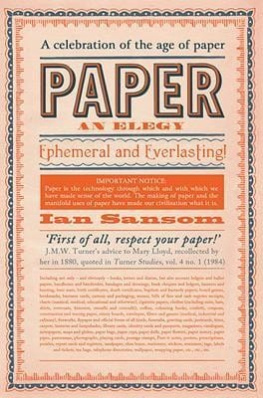Welcome to the Wonderful World of Failure
Winston Churchill once said that success was going from failure to failure without losing your enthusiasm. Gathered in this book is a collection of flawed plans, half-baked ideas, and downright ridiculous machines that, with the best and most optimistic intentions, men have constructed throughout history. Some failed spectacularly, others fizzled after great expense, one crashed on Mars and a few of these amazing broken ideas are still in use today. While this is a book about ideas and things men make that have failed, it is not a technical manual. Rather it is a fun collection that shows how an otherwise brilliant designer, scientist, architect, or doctor can often spend years or millions of dollars creating something that a few small bits of common sense would have prevented. This book begins looking at some of historys mad plans and ends with an area that has seen more than probably any other really stupid designs, the military. In between we look at autos, medicine, some really bad government plans, planes that didnt fly, and ships that sank. Feel free as you read to wonder how anyone as brilliant as many of the men who created these masterpieces of failure could have gone so far down the wrong path. These are not the creations of fools, but of men like Edison, top auto designers, the man who created the first airplane, rocket and nuclear scientists, and many others whose names you will recognize as revered thinkers. And you will be able to picture them, like any lesser inventors throughout history, just shrugging their shoulders with a wan smile as their bright idea fails and murmuring that final excuse, It looked good on paper. And keep in mind, despite all of these failed plans progress has continued to march on. Probably chuckling knowingly as it passes them by.
Success consists of getting up just one more time than you fall.
Newt Gingrich, former Speaker of the U. S. House of Representatives
Pride and conceit were the original sins of man.
Alain Rene Lesage
E. J. Neiburger
The rise and fall of many civilizations can often be traced to well-planned projects that looked pretty good in theory, but failed miserably upon execution. The story of the Great Stele of Aksum is a wonderful example.
The biblical Queen of Sheba (of Solomon and Sheba fame) built her fifty-two-room palace and ruled her great empire from the city of Aksum, in what is now northern Ethiopia. Two millennia after her death, another great civilization and world power arose from the skills and savvy of the Aksumites who created the ancient Kingdom of Aksum. This world empire extended from Ethiopia and Sudan over the Red Sea and into southern Arabia. It matched, and in some cases exceeded, the size and accomplishments of ancient Egypt, Rome, Greece, and Persia.
The kingdom began in the highlands of northern Ethiopia, the commercial crossroads for trade from Europe and Egypt into Africa. It was also the main trading terminal (seaport) for commerce from Asia, Arabia, and India into east and central Africa. The Sudanese desert and Rift Valley funneled most of Africas trade through the rich merchants and rulers of Aksum. The land was very productive, well watered with carefully tended dams, wells, and reservoirs.
The kings of Aksum grew rich on the grain, skins, animals, frankincense, spices, iron, gold, and especially ivory supplied by Ethiopias forty thousand elephants, and all this merchandise headed north, out of Africa, into Egypt and on to Arabia, India, Syria, and Europe. They grew filthy rich on metals (gold, silver, and iron), wine, olive oil, and other riches from the northern and eastern lands, which passed through their territory on the way to Africa. The heyday of Aksum was from AD 300 to AD 600. With all this wealth, Aksumite society became well educated, organized, and technically and artistically advanced. They were hot stuff and wanted to flaunt it.
In Africa, there is a five-thousand-year-old tradition that rich people build big monuments, among the biggest, most ostentatious of all monuments, were obelisks. In Ethiopia, these are termed steles. Now these steles were not the usual obelisk structures made in Egypt, or later such as in the U.S. (Washington Monument). They were not made out of bricks and mortar. No, these were super steles made out of the hardest black granite, each made in one gigantic pieceno cheap bricks. It was all or nothing. Not only were the steles made out of hard rock that was difficult to work, and of a single piece (most difficult and expensive to fabricate), but they also had to be expertly carved and designed. To top off the display of wealth, an enormous stele would require thousands of men to build, move, and erect it, thus attesting to the wealth and power of the kings who created the projector at least, paid the bills for it.
The ancient Egyptians erected twenty-two known obelisks (steles) of which thirteen now stand in Italy. The greatest standing Egyptian obelisk was the 32.16-meter (98 feet) stele erected by Pharaoh Tuthmosis III in Karnak, Egypt. The 1200-ton, 41.7-meter-long Aswan obelisk did not count because it cracked when it was only three quarters completed (during manufacture), was abandoned, and never got out of the quarry. The Aksumite kings planned to outdo the Egyptians with a bigger and greater stele. Better than the 1500 BC Tuthmosis obelisk.
Not only was this a point of flaunting ones wealth and hailing the greatness of the Aksumite kings, but the stele took on a religious role as well. The Aksumites believed the stele would actively protect the kingdom by piercing the sky and dispersing the negative forces that create storms and empower evil gods to harm the people. In a pagan society, like early Aksum, such concerns were real magic and had to be dealt with. Also, around AD 300 a new religion, Christianity, was staking a foothold in the kingdom and threatening to destabilize the historic order. A firm statement that the pagan gods and kings were in power had to be made. The largest, highest, and most expensive stele in the world seemed to offer a logical and magnificent solution.
So, around AD 330, the Great Stele of Aksum was carved out of granite to join the other smaller seventy-four Aksum steles already erected. This great stele was a billboard designed to announce the power and authority of the ruling dynasty, blessed by the gods and heaven. It was intricately carved, possessing twelve faux doors and windows and polished to a velvetlike smoothness. It weighed 517 tons and stood 33.3 meters (100 feet) hightechnically, taller than the largest Egyptian obelisk. In those days, bragging rights were everything. It is said that the gods (or God) carried it from the quarry to the steles field four kilometers away. As it was erected, it stood straight and tall. It was magnificent. The king, the people, and even the pagan gods applaudedfor a short while.

















